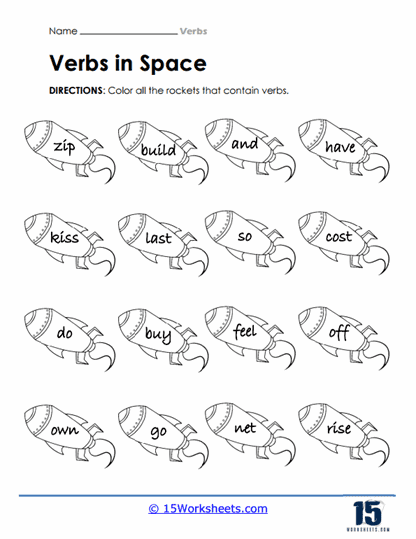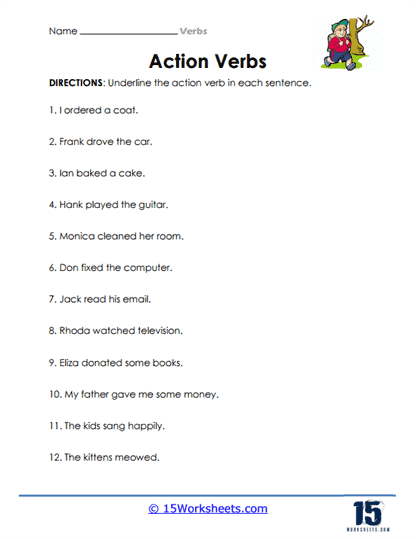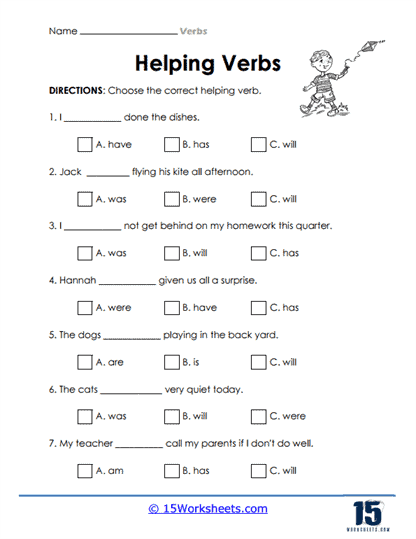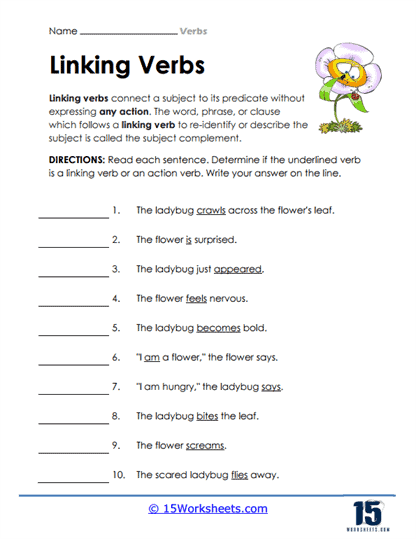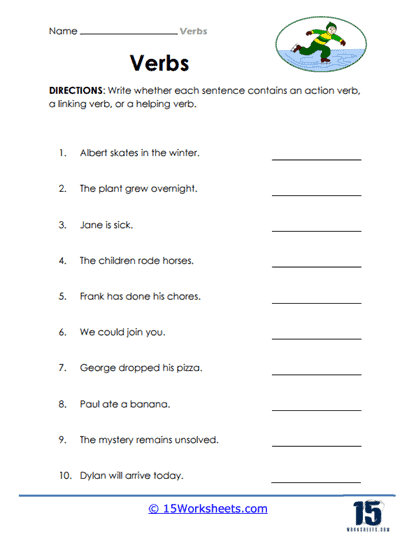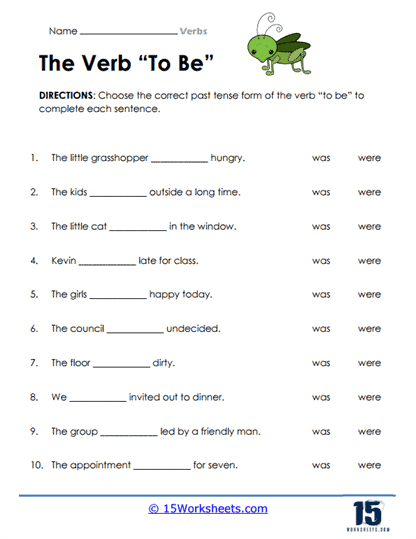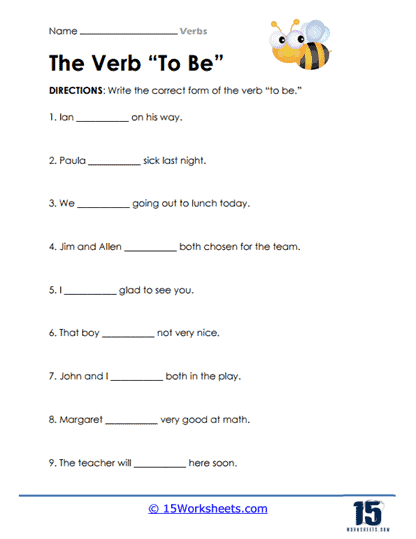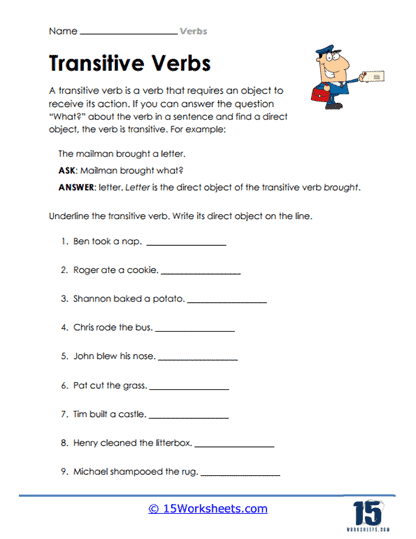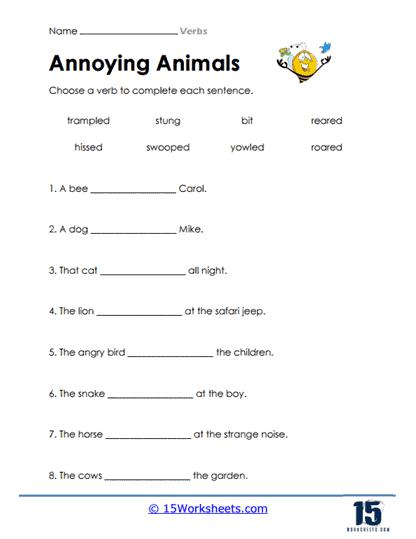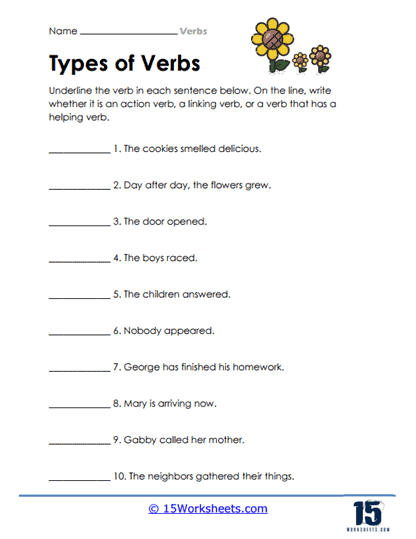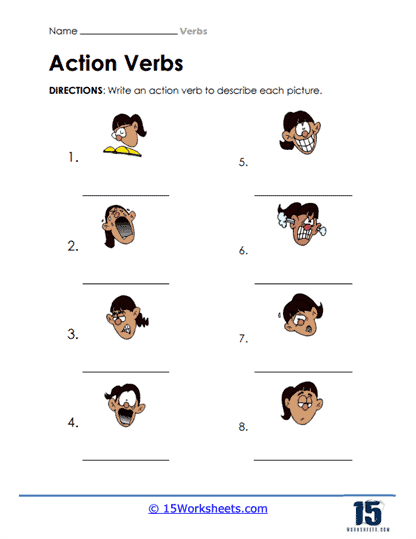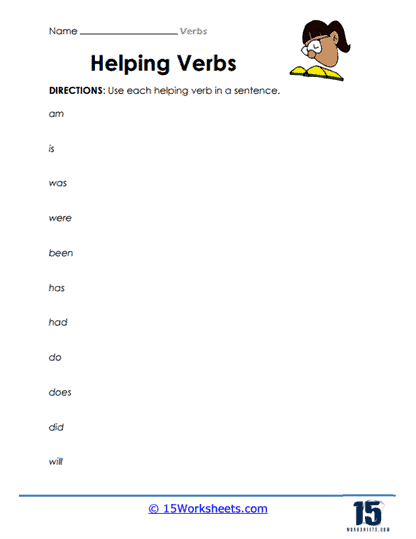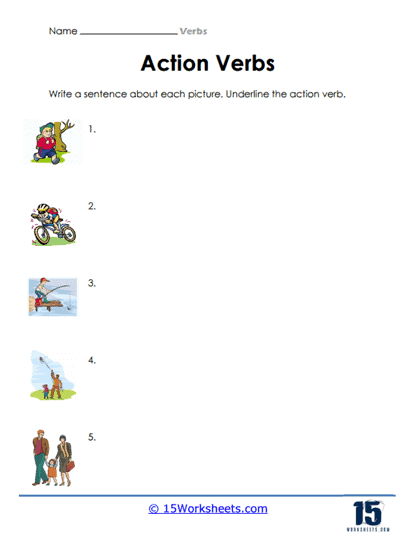Verbs Worksheets
About These 15 Worksheets
The goal of these worksheets is to help students improve their understanding of verbs, which are words that express actions, states of being, or occurrences. These worksheets typically include a variety of exercises and activities to reinforce concepts related to verbs, such as verb tenses, verb forms, verb agreement, and verb usage.
There are a wide variety of activities in each of the sheets. They include:
Verb Identification – Students are given a list of words or sentences and asked to identify the verbs within them. This helps them recognize and differentiate verbs from other parts of speech.
Verb Conjugation – Students are given a verb and asked to conjugate it correctly based on the subject and tense provided.
Verb Usage – Students complete sentences by choosing the most appropriate verb based on the context or meaning.
What Are The Different Types of Verbs?
Action Verbs – These verbs describe physical or mental actions. Examples include “run,” “eat,” “think,” and “write.”
Linking Verbs – These verbs connect the subject of a sentence to a subject complement, which provides additional information or describes the subject. Common linking verbs include “be,” “seem,” “appear,” and “become.” For example, in the sentence “She is a doctor,” the verb “is” links the subject “she” to the subject complement “doctor.”
Helping Verbs (Auxiliary Verbs) – These verbs work together with the main verb to express tense, mood, voice, or emphasis. Examples of helping verbs include “have,” “be,” “do,” “can,” “will,” and “should.” For instance, in the sentence “I have finished my homework,” the helping verb “have” is combined with the main verb “finished” to express the past tense.
Modal Verbs – These auxiliary verbs express possibility, necessity, permission, or ability. Modal verbs include “can,” “could,” “may,” “might,” “shall,” “should,” “will,” “would,” “must,” and “ought to.” Examples of sentences with modal verbs are “You should study for the exam” and “I can swim.”
Transitive Verbs – These verbs require a direct object to complete their meaning. They transfer the action from the subject to the direct object. For example, in the sentence “She eats an apple,” the verb “eats” is transitive, and “an apple” is the direct object.
Intransitive Verbs – These verbs do not require a direct object to complete their meaning. They express an action or state without transferring it to an object. Examples include “sleep,” “laugh,” “arrive,” and “fall.”
Phrasal Verbs – These are verb phrases formed by combining a main verb with a preposition or an adverb. Phrasal verbs have unique meanings that may not be deduced from their individual components. Examples include “take off,” “look after,” “put up with,” and “give up.”



